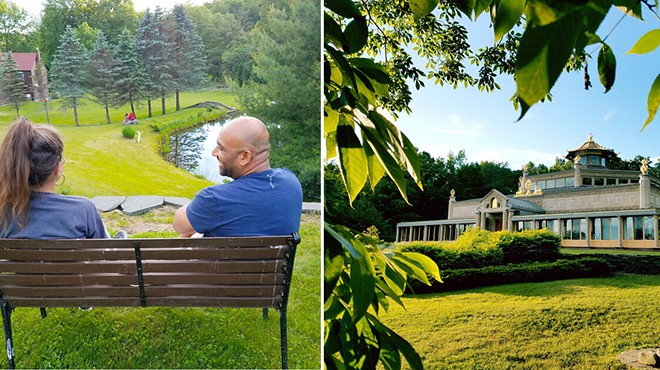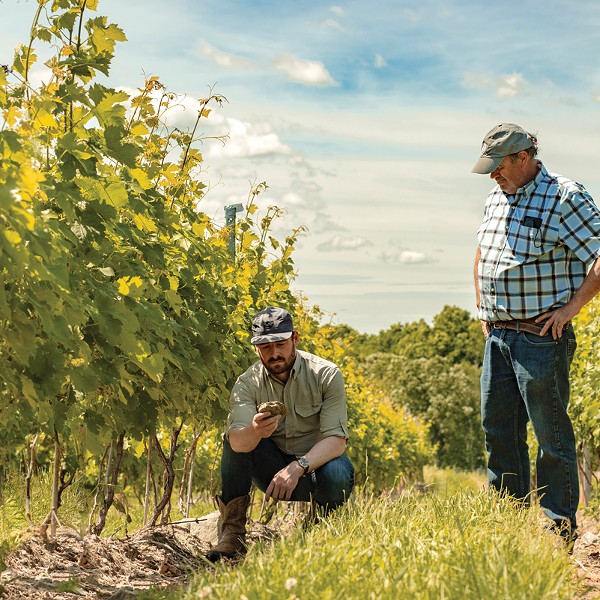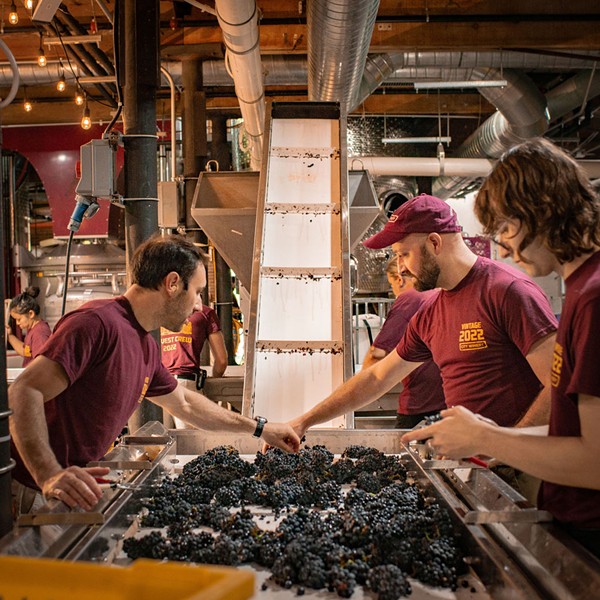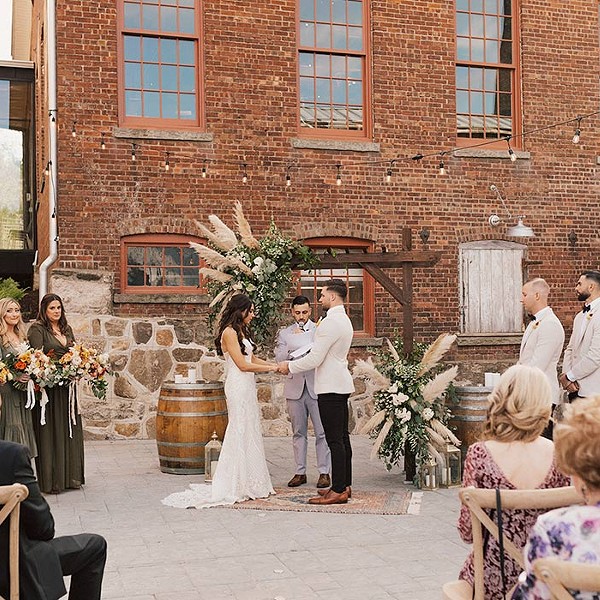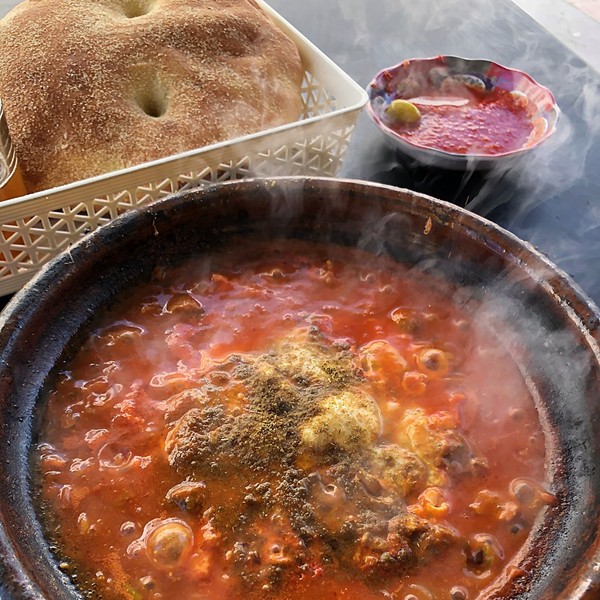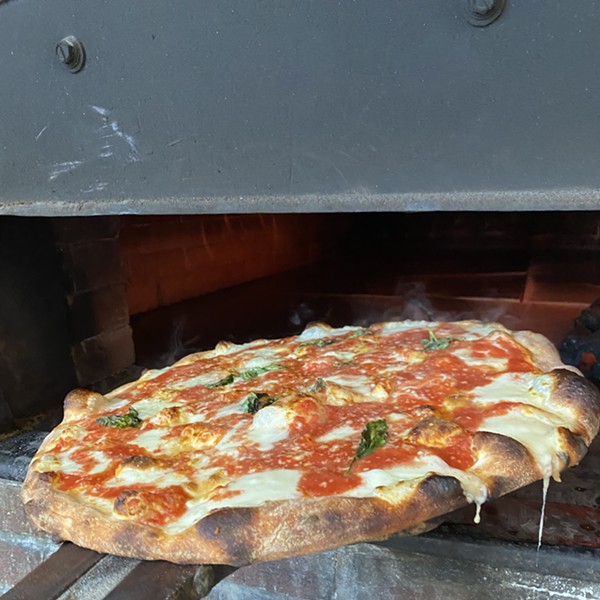Paula Cereghino is a visual artist who worked for years in the fashion and wine businesses, and Fred Smith is the bass player for the seminal New York punk band Television. Cereghino’s grandfather, who emigrated from Genoa, Italy, had a cooperative farm in Tacoma, Washington, where she grew up. “Every year they made about 200 gallons of wine—as much as they could [legally] get away with,” she explains. On a trip to Northern Italy about 10 years ago that centered on a visit with a first-rate winemaker, she became inspired to try it for herself. Smith developed his palate on tour: “Playing in a band that traveled to Europe often gave me lots of opportunities to try many wines,” he says. “I was lucky enough once to get a week off in Bordeaux while I was accompanied by a couple of English wine-enthusiast roadies. We rented a car and took off to Saint-Emilion, where we went on a shopping spree. After that I was able to get ‘two bottles of good Bordeaux’ put on the band’s backstage food rider.” Cereghino accompanied him on tour whenever possible, and they tasted together everywhere they went.
The duo began making wine in their apartment on Houston Street in 1999, shortly after Cereghino returned from Italy. They bought some California Zinfandel grapes and fermented the wine in 15-gallon glass demijohns. “‘I’ve got some homemade wine’ is one of the scariest things you can hear when visiting someone,” Smith says. “But it was just kind of fun to do. And when I had the first sip, at racking [siphoning the wine off the sediment], I couldn’t believe how good it tasted; it tasted like wine. Then the finished product was better than I had dreamed was possible.” Later, he bought Cereghino a small oak barrel for aging their wine as a gift. She remembers being relieved upon unwrapping it that it wasn’t “something dumb, like a computer.” Their enthusiasm quickly increased, and they began taking courses and seminars on winemaking—at the New York Horticultural Society, Cornell Cooperative Extension, and elsewhere. In 2003, they bought a 250-year-old house in Bloomington, renovated the accompanying barn, and began making wine at a professional level.
They buy their grapes from high-quality growers in California and hand-select and de-stem them before crushing. Fermentation takes place in three stainless tanks, and then the wine is aged in custom barrels, unique to this winery, with Canadian oak staves and American oak ends. This unusual combination allows the wines to benefit from the different qualities of the two woods; Canadian oak is considered to be a little closer to French oak in the subtler flavors it imparts to wine but costs substantially less. Smith’s recording studio is upstairs from the winemaking operation, and combines some seriously funky vintage processors with a computer and Protools, thus taking advantage of the best that old and new technologies have to offer. He clearly enjoys being an engineer as well as a musician, and this extends to the winemaking downstairs.
“He’s the scientist and I’m the artist,” Cereghino says as a shorthand way of explaining their complementary abilities. “We’re comfortable in our roles.” Smith explains that “what we make is dictated by what there is,” and describes the process of reconciling their passion for flavor with the technical process of achieving it as being similar to producing live-sounding music in the studio. As winemakers, they have their priorities carefully tuned; since most wine is bought to accompany a meal, all of their wines have refreshingly low alcohol—ranging between 12 and 14 percent—which makes them uncommonly nimble and food-friendly for wine made from California grapes these days. Paula explains that “we love food, so we try to make wine that goes well with food.”
Their two most popular and inexpensive (around $20) wines are blends. Eaten By Bears is a blend of 42 percent Sangiovese, 37 percent Petite Sirah, and 21 percent Mourvedre. The name comes from a friend’s warning when he heard that they were moving to the country (“You’ll be eaten by bears!”) and the wine is bright and cheerful. Rock `n Roll Red is a blend of the same grapes, but in reverse proportion; Mourvedre dominates at 60 percent of the blend, with 25 percent Petite Sirah and 15 percent Sangiovese, making the wine sturdier and better suited to hearty fare. Genoa ($26), their newest blend of 75 percent Sangiovese and 25 percent Petite Sirah, features a pencil drawing by Cereghino on the label; taken from old family photos, she tinted it with espresso. Tasted from the barrel just prior to bottling, it revealed a more complex aromatic profile and depth of flavor than the other blends, which should easily justify its higher price.








